Alejandro Arbona was assistant editor on DAREDEVIL and during his 5 years at Marvel, he worked his way up to associate editor and also editor on several titles. Here we discuss many aspects of editing comics and how it related to the stories in the Brubaker/Lark run and the transition to the Diggle/De La Torre issues. This interview was conducted through e-mail from late June to late July, 2012. Many thanks to Mr. Arbona for this opportunity and I hope readers get a new insight into what an editor does on the comics you enjoy.
Kuljit Mithra: Before we discuss your work at Marvel, I wanted to ask you first what it was like to work at WIZARD. I believe I first saw your name listed in DAREDEVIL (as assistant editor to Warren Simons) in 2007, so were you at WIZARD right before this?
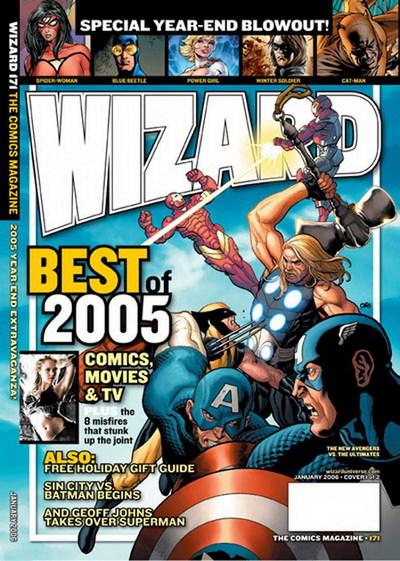
Alejandro Arbona: I worked at WIZARD from 2004 until making the move to Marvel and Warren Simons's office in October of 2006. I was a contributing editor for the magazine, overseeing the writers on a mix of feature articles, columns, reviews, and humor features, and frequently writing all those things myself as well.
I'm the first one to crack jokes about WIZARD, but the fact is that I had some great coworkers there, people who've become lifelong friends and who have since then journeyed far and wide across the comics and entertainment industries like a diaspora of creativity. We all loved good comics, and however frustrated we might have been sometimes, we legitimately enjoyed creating a fun magazine month after month. The job did also have some tremendous high points; I got to spend a couple of hours on the phone with Alan Moore one day, and I got to visit London to meet Hugo Weaving and Natalie Portman, and it was at WIZARD that I first befriended Salvador Larroca, with whom I'd end up collaborating again and again for years after. WIZARD was a situation far from perfect, but I have lots of fun and happy memories of the time and the people.
But to give you an example of how the job could get frustrating, it was hard to get the magazine to agree to do a piece on the DAREDEVIL run by Brian Michael Bendis and Alex Maleev, and later, on the first arc by Ed Brubaker and Michael Lark, because the comic was so consistently good, issue after issue, that our superiors didn't see a hook where anything new or novel could be reported on. A comic that was so reliably good that we couldn't find anything to say about it; real head-scratcher, that one. My old colleague Sean T. Collins was the one repeatedly hitting his head taking a run at that particular wall.
It was right during the release of Ed and Michael's first arc that I was interviewing with Warren and Marvel -- funny, when Joe Quesada asked me what current artists I liked, the first name I mentioned was Michael Lark, without quite putting together, in my nervousness at that moment, that Warren was editing DAREDEVIL and that if I got the job I'd be working with Michael -- and then I came over just as the second arc was beginning. I believe the first issue I worked on and got a credit was #91.
Mithra: So with issue #91, that puts you coming onboard after Matt has escaped from jail and is on his way to Europe. That's almost a year into the Brubaker/Lark run (and I won't forget Gaudiano & Hollingsworth). I'm going to hazard a guess that you had a lot of catching up to do in terms of what had already happened and what was planned, since the Mr. Fear storyline pretty much was in the book for another year. And this doesn't even include all the other books like IMMORTAL IRON FIRST, INVINCIBLE IRON MAN, and THOR that were under corner of editorial. How do you even keep all of that straight?
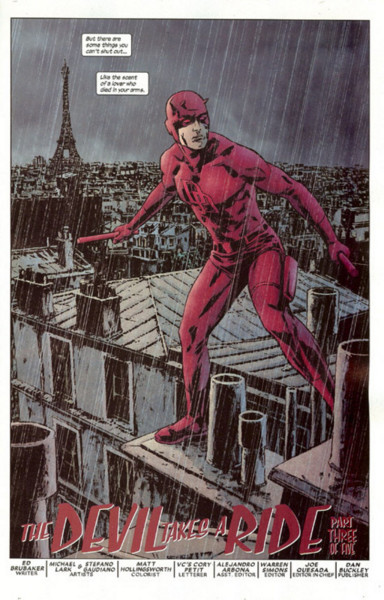
Arbona: I had been reading the comic faithfully, so I was at least caught up on what came before, but then there was all the unevenness between the last issue to come out, which I had read, the issue that was already wrapped and at the printer but not in stores yet, the issue that was all drawn but still getting inked and lettered and colored, the issue just starting to get drawn, and the issue being scripted at the time. Warren would ask me for updates on a handful of issues I was only just then learning to track, on one title alone, to say nothing of the other titles we were putting out; the same confusion on each one. A lot of times, when it comes to the pencil-ink-color stages of the process, editing a comic isn't like managing a project, it's managing 20 or 22 individual projects, namely tracking each page, getting each page wrapped, plus the cover. Multiply that by two or three issues of any given title that are in one stage or another of the process at any given time, and multiply that by the number of titles you're overseeing, five or six or eight or however many. Sometimes I had as many as a dozen to run by myself.
It was a LOT to learn to keep track of, and the learning curve in editing comics is slow, but sure enough, a sharp person is capable of surprising feats. By the time I was up to speed, I could track all my files at a glance, and I had a really dizzying amount of random production information in my head. To this day, you can ask me about any comic, any specific arc or issue, that I worked on with Warren, with Steve Wacker, with Ralph Macchio, or on my own, and I can probably tell you from memory not just who wrote it and drew it -- that's easy -- but who inked it, who colored it, who lettered it. I could tell you who in the Marvel production department laid out the cover, and who did the compositing and sent the files to the printer. I can remember the occasional mistakes that got by us -- "Oh, INVINCIBLE IRON MAN #29? That's the one where I left in a word balloon covering Rescue flying away in the background, but it's fixed in the trade." Or that might have been #30, definitely one or the other. Pretty sure it was 29.
At the time I was immersing myself in DAREDEVIL, though, Warren and I still didn't have most of those others you mentioned. We were just starting IMMORTAL IRON FIST #1 -- that was the first comic I got to join at the ground floor and help launch -- and we were doing SENSATIONAL SPIDER-MAN, PUNISHER: WAR JOURNAL #1-3, and several others, and developing a bunch of pitches, some of which ended up happening, some of which didn't.
Mithra: That's interesting about how you consider each page of the comic as a "project". I don't think I've ever heard anyone describe editing comics in that way.
Had you had any experience in editing comics before like this? Or was a lot of this on-the-job training from Warren Simons? He had only been at Marvel for a few years at this point too, correct?
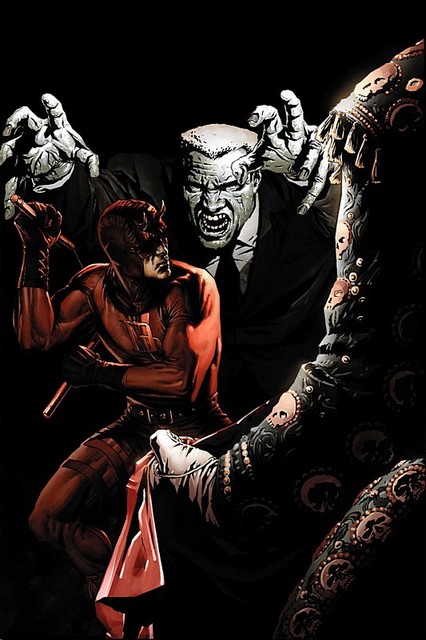
Arbona: Warren taught me everything. Not only the practical methods of production -- the craft and protocol of trafficking a comic through all the stages of the process -- but the more abstract ideas about storytelling and story editing, too. I had learned all about the principles of those things in film school, in scriptwriting classes, and just by reading a lot and watching a lot of movies and in my own writing, but I feel like Warren's tutelage was where it all started to come together for me, and my story skills were finally crystallized and sharpened to a professional level. He had been at Marvel for a little over four years at that point, starting out as an assistant to Axel Alonso.
We were lucky, Warren and I, in that our tastes dovetailed nicely and we liked the same sorts of stories in the same sorts of styles; for me, that was partly because my own tastes neatly matched his to begin with, but also on top of that, because I took his lessons and style choices to heart as a mentor and further honed my sensibilities by his example. The reason I say that made us lucky is because it allowed us to develop a really fruitful rapport as an editorial team, working together and not often being at odds with one another. Sometimes a really great editor can be paired with a really great, really promising assistant editor, but if their personal tastes are wildly different, they'll never be totally happy with each other's work, and they won't be doing their best as a team.
By the time I was running a lot of comics under the more hands-off supervision of Ralph Macchio -- continuing the comics Warren and I had launched like INVINCIBLE IRON MAN and THOR while also starting up a bunch of new ones like BLACK WIDOW with Marjorie Liu and Daniel Acuña -- I had cultivated my own sensibility, to an extremely rigorous and demanding extent. Later I worked for Stephen Wacker, and got promoted to associate editor around that time, officially taking over the editorial reins on INVINCIBLE IRON MAN and editing comics like OSBORN by Kelly Sue DeConnick and Emma Ríos under Steve's oversight. Not long after that I moved out of Steve's office and reported directly to Tom Brevoort. As an editor myself, I always tried to be as thorough and exacting with the quality of the stories -- and as respectful and deferential toward the writer's own work from their own creative wellspring, not ever to be undermined -- as Warren had taught me.
Mithra: On DAREDEVIL, were you concentrating more on the production side, or were you also in constant contact with Ed Brubaker or Michael Lark for script and art changes, etc.? Considering you said you were a fan of the book beforehand, it must have been difficult to be a professional and tell them things they may not have wanted to hear about their work if it needed changes. I guess what I'm really asking is if you ever truly got comfortable with that aspect of the job.
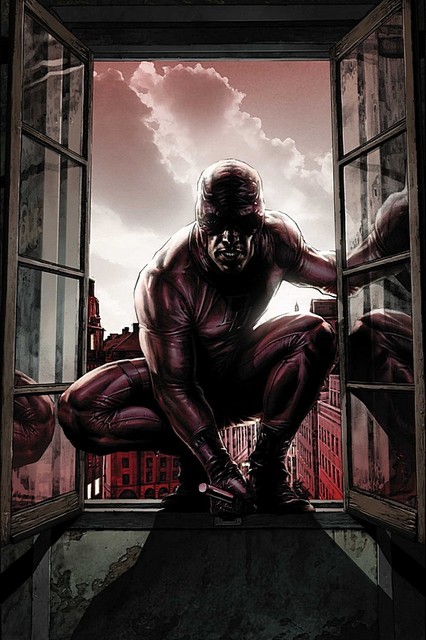
Arbona: When I was first working on DAREDEVIL, it was literally during the very first months of my Marvel career, when it was practically all I could do just to keep up with the overwhelming and labor-intensive production process. Still, Warren was always great about asking my opinion of new scripts when they came in from Ed, and about sharing his impressions and notes with me, in an instructional sense. Same thing with the art. At the same time, Ed Brubaker writes scripts that are tight as a drum, and Michael Lark is a consummate storyteller with a gorgeous style. (I like to think I've got good taste, and not for nothing was Michael's one of the names I mentioned to Joe among my favorite artists at that job interview.) It was extremely rare to have to discuss major changes with those guys.
I was on DAREDEVIL for two and a half years, though, and collaborators such as writers and their editors get comfortable with each other fast, or at least they're supposed to, when things are going well. Like I said, DAREDEVIL wasn't a comic that ever needed a lot of heavy lifting on the storytelling end. But I did warm up really quick to quibbling with Ed about those nitpicky little line-editing things editors are supposed to fuss over, and me especially; I remember a back-and-forth we had about one of those very first issues I worked on -- #91 or 92 or thereabout -- where he used the phrase "coffee grinds" and I pushed hard for changing it to the correct term, "coffee grounds." Heh...I was overruled!
But I also randomly remember another time, during my first few weeks or months on the job, when Tom Brevoort shared, with all of us in the various editorial teams under his oversight, a script by Ed for a YOUNG AVENGERS one-shot featuring Winter Soldier. I read the script and suggested a joke to Tom, a little throwaway line of dialogue for Kid Vision. Tom passed it along to Ed, and Ed liked it and used it. That was a real thrill so early in my editorial career.
To address your point about whether, as a fan of the comic before I worked on it, I ever truly got comfortable in that role: An editor is specifically NOT supposed to be a starry-eyed fan, but a critical, exacting steward of the characters and the comics, as well as a creative partner, working alongside the writer and artist to ensure the work meets the standards of quality we all like to see. And that isn't an antagonistic relationship, it's collaborative; a good writer will appreciate and respect the constructive contributions of a good editor. Like any good story and art team, Ed and Michael and Stefano were very welcoming and gracious with me when I first came aboard DAREDEVIL as a rookie assistant editor in that fall of 2006, and it wasn't long before Warren and the DD team and I were all conversing freely about the comic and our ideas. Once that level of rapport is reached, the creators of a comic and the editors all become collaborators and partners and equals.
Mithra: I wanted to get your comments on all your issues of DD, and I think it works easier if I break it up into two parts, namely the issues before the intro of Lady Bullseye and after. For the most part, your early issues are concentrated on the mystery involving Vanessa Fisk, Mr. Fear etc. and then the Brubaker/Rucka co-written Cruel and Unusual, sprinkled with some great interlude issues. For the whole Mr. Fear arc, one of the things I heard a lot from DD fans was that it was taking too long to get to the reveal that Fear was behind everything. Was there any worry on your side about this? Also, was there any worry that the casual fan wouldn't even know who he was once he was revealed? It must be difficult to appease the die-hards and the first-time readers.
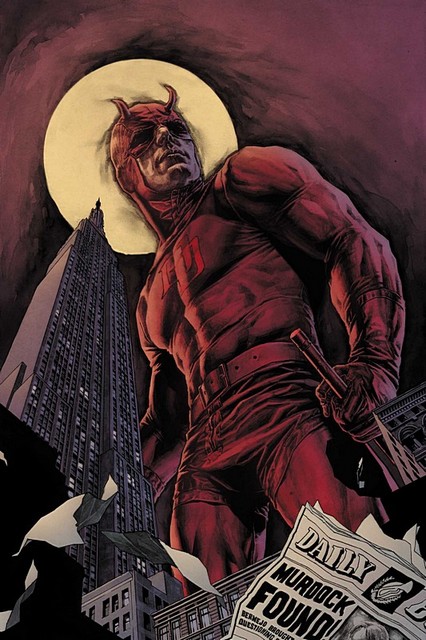
Arbona: Pleasing the longtime fans of a character while keeping it clear and accessible for new readers is the tightrope-walk of ninety-nine percent of the super hero comics put out by Marvel and DC, and a constant challenge to all the writers and editors. But it's also a challenge Warren and I relished and a standard we always worked hard to uphold. Even when we were editing a comic with as much weighty backstory to carry on its shoulders as DARK REIGN: ELEKTRA, to give you one example -- being clear enough about the factors that inform Elektra's character, while providing enough clear exposition to fill the reader in on the status quo of "Dark Reign" and on the events of the WOLVERINE: ENEMY OF THE STATE story which informed this Elektra mini-series, and all while not boring the readers who were familiar with all that stuff, and introducing new twists and new characters, to boot.
That was the same kind of challenge we had to confront in DAREDEVIL, whenever dealing with characters built on the foundations of earlier stories, such as Vanessa Fisk and Mr. Fear. If you try to read those DD issues we did in a sort of zen-like state, willing yourself to forget everything you know and pretend all those characters and backstories are new to you -- or better, if you hand them to a new reader, cold -- I think you'll find the clarity and accessibility are all there, tricky as it was to pull off. That's actually how I try to edit comics myself: by willing myself to become a clueless new reader every time, and working on clarifying anything that could become confusing.
In terms of how long a story takes to unfold, at that point you're just talking about individual readers' opinions and about the team's storytelling choices. Both are equally valid, but it's ultimately a matter of opinion. It was a storytelling plan to go deeper and deeper into the layers of the mystery Matt Murdock was investigating, building on the tension and raising the stakes higher with each issue and each new discovery Matt made. It may work well for some people, it may not work for others, but those are the risks you take when you tell a story and make your creative choices.
The challenge, of course, was that we were pushing Matt Murdock toward a huge and difficult set of transformations in his personal life and his life as Daredevil. Getting to a culmination as overwhelming as that had to be a thorough process. I mean, Matt Murdock may have had tough times once or twice before then, but it still isn't every day a person gets their entire existence blown to smithereens.
Mithra: Something Warren Simons said to me in 2007:
"As long as there's a good, original story driving the comic, I think continuity is great. When continuity acts as a crutch, and when I need to bring 30 years of knowledge to an issue to have any idea what's happening -- when there's no story besides the continuity, and it's impenetrable for a new reader -- that's when I want to put a drill bit to my head."
So I can see where you're coming from.
By the time you got on the title, Danny Rand had been revealed as the person masquerading as DD. Daredevil is always compared to Batman, and the man in that costume has sometimes been someone other than Bruce Wayne. Although the title of the book is DAREDEVIL, are you more interested in what's going on with Matt Murdock, or do you even separate the two?
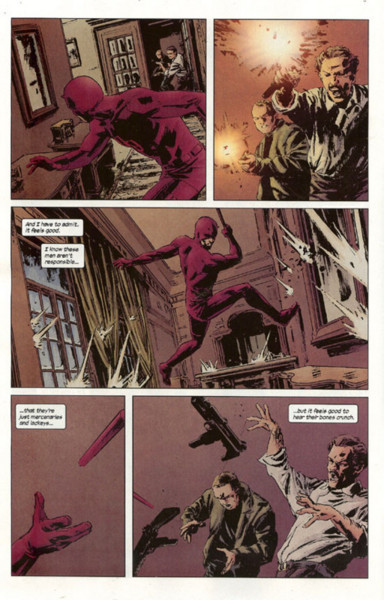
Arbona: The way to play to the strengths of continuity -- and I'm basing this on an opinion of Warren's that he only ever expressed as a gesture with his hands -- is that a rich continuity works when it's a long road behind you and you're moving forward on it, but fails when it's a precarious Jenga tower underneath you and you're building on top of it. For example, CIVIL WAR worked for Marvel because it was based on these two main characters, Iron Man and Captain America, with rich character histories that made them inclined to side one way or the other in the argument at the heart of that story. If you knew the characters from
way back, you knew it suited each of their pasts, but if it was your first comic ever, it was still an accessible entry point and relatable stakes for each of them. On the other hand -- and not to knock DC here, I really do like some of what they do, but not this one -- INFINITE CRISIS didn't work because it was a direct sequel to a comic book from literally twenty years earlier.
There were a series of would-be dramatic reveals and should-be twists concerning characters who hadn't appeared in comics since 1986 -- Alexander Luthor, Superboy Prime -- and you were expected to know who they were,
and care. That was a comic that only the most dyed-in-the-wool DC fans could get into, fans who had a vivid and immediate recollection of CRISIS ON INFINITE EARTHS or who, clued in by the echoing title INFINITE CRISIS, had gone back and done their reading homework
as a prerequisite to enjoy this new event. Reading homework. Now that's just a poor use of continuity.
But to actually answer your question, no, I don't make any distinction between Matt Murdock and Daredevil. Matt is DD, DD is Matt, they're one man with two personae. If Danny Rand is temporarily wearing the red suit while Matt Murdock is in prison, that doesn't automatically make Danny Daredevil, and it doesn't make Matt stop being Daredevil; there he was in prison, doing his DD thing, and there was Danny out
on the streets, simply offering the best imitation of Matt he could muster -- and not a totally convincing one, at that; he wasn't using the billy clubs, as Matt noticed when he fought him, and when he was cornered he... y'know... he lit his freaking hand on fire.
But that's a testament to the richness of a character like Matt Murdock (or Peter Parker, or Bruce Wayne, or Tony Stark), that you can tell a story with them out of the costume and it can still be as interesting and engrossing as any of their superhero adventures, without having to depend on the other identity as a counterpoint. I don't think you can quite say the same about Captain America, or Thor... and definitely not about Superman, or Wonder Woman, or the Flash. (Sorry again, DC. At least I got Batman in there with the good ones. And for the record I lov-v-v-v-v-ve the Flash.)
Mithra: Along with the regular art team, you got to work with several other talented artists, including Lee Bermejo and Marko Djurdjevic on covers, and an issue with Lee Weeks (and a John Romita cover). So, two questions... Can you go into how you coordinate with the cover artists (design, characters to draw, etc.) and also can you go into the planning for the "romance issue" in #94?
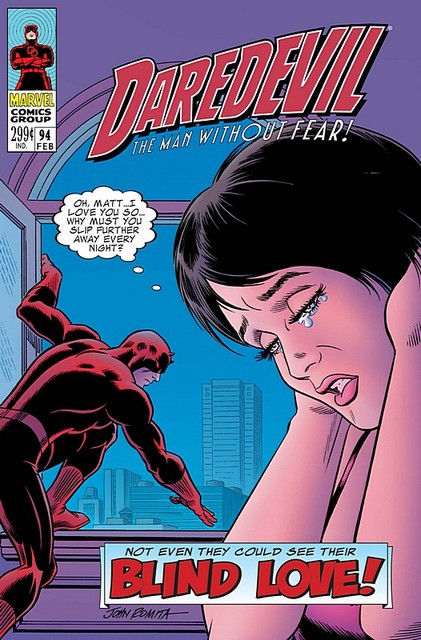
Arbona: Having just started at Marvel with DAREDEVIL #91, I was still relatively brand-new and learning my trade when Ed and Warren planned the romance issue for #94, and when Warren worked with the great John Romita to plan the cover, so I was still fairly clueless. Any insight I had into the planning of that issue only came to me from Warren telling me separately about their concept and ideas for it. However, I do remember that when we worked on that issue, and the arc before it, every little detail of the fate that would befall Milla was already in the cards and planned out meticulously, making the romance issue all the more tortured and tragic.
Planning and executing covers, though, is a surprisingly complicated process that's influenced by a lot of factors. I'm talking here about all the series I ever did, not specifically just DAREDEVIL anymore, so different factors of these can sometimes apply or not apply to different comics.
For starters, we're creating the covers several months ahead of the rest of the issue, to get them into the sales catalogue, and in some cases we haven't even determined yet what exactly is going to go on in that issue. We might have a larger story outline that involves plot points A, B, C, and D, but we may not have figured out yet whether "C" is going to happen toward the end of issue number twelve or early in issue number thirteen.
At the same time, there are also two major prevailing aesthetics in what you put on your cover: either a highly dramatic rendering of a specific scene that actually occurs in that issue, or a more all-purpose pin-up that might allude to the events of that issue but in general is just a cool, compelling visual. Both approaches have pros and cons, but in recent years the trend has definitely swung toward the latter. And when I categorize these two approaches, for the sake of simplicity I'm also thinking of a third approach as part of that second one, although it really isn't -- the really beautiful, unique, idiosyncratic, well-composed design pieces, more in line with the aesthetics of graphic design and posters, incorporating graphics and text and other design elements -- which is probably my favorite cover style of all.
Nevertheless, readers and editors and creators don't exactly want covers anymore that feature only a shot of the hero and don't give you any impression, however vague, about that particular issue, like you used to get on Tim Bradstreet PUNISHER covers and on ULTIMATE SPIDER-MAN.
So for all those reasons, designing covers often becomes a tightrope walk between figuring out in advance as much of the plot to tease on the cover as we possibly can, while also keeping it a simple, strong, direct graphic piece that projects a clear, compelling image at a glance.
Sometimes those ideas come from the editor, sometimes from the writer, sometimes from the cover artist,
but most often from all of them communicating and figuring something out together. For a cover in the "Cruel and Unusual" arc,
the cover that ended up on the collection, Ed and Greg shared all of what the story would ultimately be about when the arc had played out in full. Marko Djurdjevic took all that info and worked on some concepts on his end, finally coming up with that design piece showing Daredevil and alluding to international crime, drugs, and guns -- the evils that would turn out to be behind this mystery when it unraveled. It was a vague image that only alluded to these different things, but it worked for us as a sort of movie poster of what Daredevil would be up against in this story.
Mithra: Since we're talking about Djurdjevic, let's discuss issue #100, with his wraparound cover and all the guest artists. I feel like I'm asking you all these questions about "coordination", but you've got so many elements here with the cover and then getting script pages to each artist, the extra pages, the extra variant covers... was it an extra headache?
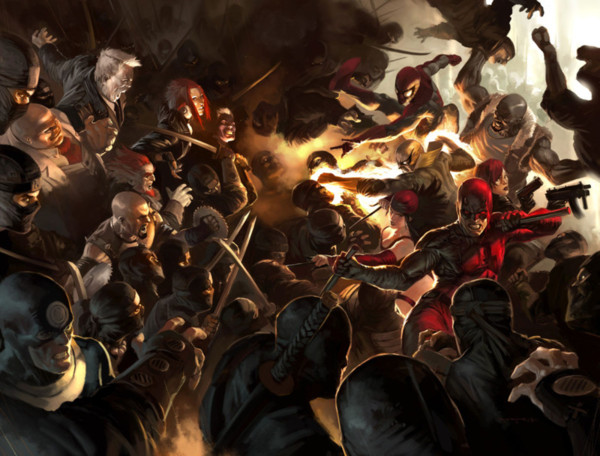
Arbona: I'd never describe it as a headache when it's an exciting project and a good story. It was a big production, to be sure, and a huge challenge of coordination while working against a ticking clock, but it was tremendously fun for me and Warren to bring that whole issue together. Earlier I described running a comic like getting each page trafficked and done as an individual project, so when you're dealing with more pages and more contributors, it's just a bigger handful. But a very important personal philosophy I once learned from someone -- unrelated to comics or anything, this actually came in the form of cooking advice -- is to remember that a lot of times the things that people consider difficult really aren't, they're merely time-consuming. If you keep that in mind as you plan and do the work, and don't get harried by it, your confidence in what you're capable of achieving is boosted tremendously.
We got to work with Gene Colan on that one, a dream come true for anyone involved with DAREDEVIL, and with Lee Bermejo, and Marko Djurdjevic doing interiors for the first time along with his killer wraparound cover. And of course, with Bill Sienkiewicz, who we'd already been working with on the long-gestating DAREDEVIL: END OF DAYS project.
It was an even bigger production when we did the anniversary issue of #500, renumbering the series and ending Ed and Michael and Stefano's run. We added that amazing story by Annie Nocenti and David Aja, and Warren got us those great pin-ups by Rafael Grampà and Geof Darrow and everyone (along with that gorgeous cover Geof did).
Funny tangent: while we were beginning to put that issue together, I was on the sidewalk across the street from the Marvel offices one day, coming back from picking up lunch, on an unbelievably warm, bright, and sunny day, when this stooped-over, honestly-kind-of-miserable-looking figure shambled by immediately in front of me, wearing a dark overcoat and a hat and a scowl on his face, his cheeks pulled inward as he sucked in a foul drag from an inch-long cigarette butt. It was Frank Miller. I didn't do anything or say anything -- it felt like he was gone in a second -- but later I told Warren I regretted not pouncing on him and introducing myself and asking if he'd draw a variant cover or a pin-up for the anniversary issue. He assured me not to worry about it.
Warren had also asked David Mazzucchelli if he'd grace our issue with a contribution, which would have been, for me, the absolute top of the heap. I worship fervently at the altar of Mazzucchelli. But alas, he very gratefully and very politely declined. I've heard similar anecdotes from other people, and it began to sound to me like there's no nicer or more flattering guy turning you down than David Mazzucchelli.
Mithra: Does Marvel have some kind of internal database of creator contact information, or are you as an editor left to your own contacts and networking to get in touch with some of these writers & artists? Is it really just as simple as picking up a phone or sending an email? For the interviews I've done for the site, I've always sent emails and for the most part I've had a good response, but some people (who I won't name) are offended I even asked them.
Arbona: Editors have their own personal rolodexes, but the key talent management people also keep a database of contact info of their own. If an editor doesn't have contact info for someone they'd like to reach, they'll ask another editor who works with that person, or they'll check with the hub of the wheel with the talent management guys. Still, it isn't an unusual thing every once in a while for editors to send an email around the office to all the editors asking if anyone has contact info for So-And-So.
Mithra: We've touched on some of the issues after issue #100, so I'm going to skip ahead to #111, the intro of Lady Bullseye and the change in "tone" (if you agree with that statement) to the The Hand storyline and Matt's eventual decision to become their leader.
Something you said when you were talking about your time at WIZARD... about how good DAREDEVIL was, but they didn't want to write about it. While working on the title, did you ever feel readers were just taking it for granted? Reason I ask, is if this somewhat influenced the changeup in direction?
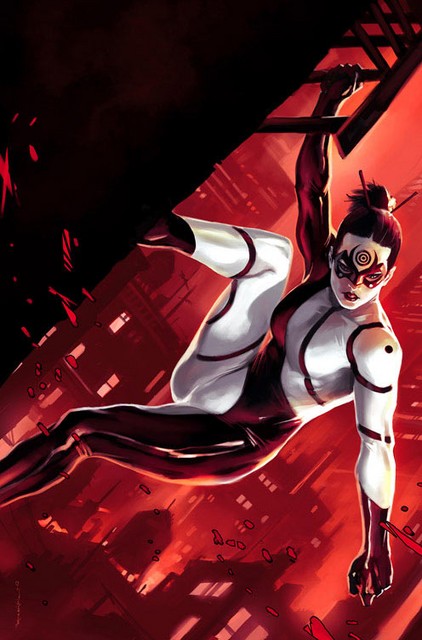
Arbona: The change in direction with DAREDEVIL #111 and the Lady Bullseye story was always part of the larger narrative plan, but we also relished the chance to get a little publicity out of it and attract some new eyeballs.
It's not that readers take the comic for granted, far from it, but it's that all too often, even in a bull market for comics, a plateau in sales numbers from those usual loyal readers is the best you're going to get sometimes. The regular, day-in-day-out DAREDEVIL fans were always very dedicated and passionate about the comic, but any new readers will only be attracted by word of mouth and whatever publicity we can generate. So a jumping-on point can be a welcome and refreshing thing during a long run, to create a new hook for marketing, and to create something new to say about the comic for those word-of-mouth recommenders and the retailers hand-selling the title to their customers. "You've got to read DAREDEVIL, it's a great comic, and this next arc they're teeing up a big Kingpin story and introducing a lady Bullseye" generates a lot more curiosity in the comic from people who aren't reading it than describing everything that's BEEN happening in the comic in the past tense.
It also sends a signal to curious browsers that the comic won't be forbidding and inaccessible to them, that we want them to try out some new stories which we're letting them get in on at the ground level. Much as I loved our entire run of DAREDEVIL, some of my very favorite issues and arcs are the ones I can absolutely hand to anyone to read regardless of what came before it: the prison arc, the Brubaker/Clay Mann issue about Lady Bullseye, the Brubaker/David Aja issue about Kingpin, and the arc about Big Ben Donovan that Ed co-wrote with Greg Rucka. If people like those, and they usually do, then there's more to follow it.
Mithra: As the larger story unfolded, I could see where it was headed and I remember contacting you with my reservations about Matt becoming the leader of The Hand. I felt it just wasn't something Matt would do. But by issue #500, I was convinced it was the right place for the story to go. At what point had it convinced you?
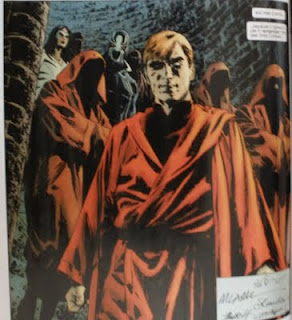
Arbona: I do remember when you said that! Here's the thing, though: A story sinks or swims in the execution. An idea voiced out of context, devoid of the process of characterization and dramatization, is only so much arbitrary, meaningless what-iffing. "Wouldn't it be cool if XYZ happened?" or "We're going to make So-And-So do this and that."
What I mean to say is that I was always aboard with that story plan for Matt Murdock -- as with any seemingly out-there story that's pitched to me as an editor -- as long as it inspired in me the conviction that the arc to get the character to that place will be organic and convincing in its execution.
To say "Matt Murdock will become the leader of the Hand, an evil organization he despises, a decision which negates everything he stands for" is ultimately nothing, and isn't believable. That's why you couldn't wrap your mind around it when you suspected that was where the story was heading; it just seemed too far-fetched. More convincing is to say "Matt will become the leader of the Hand because he'll have no other choice." That seems a little more feasible. And to say "We'll progressively unpack a story where all of Matt's options and all of Matt's convictions will eventually lead him toward making this terrible, doomed choice because it'll be the best and only course of action left to him," that's the approach which seems like it could hold water. Once that possibility is discernible in the spine of the story, it's just a matter of pulling it off; moving the pieces in such a way that that's the story you tell and it happens for real, relatable, dramatic character reasons.
With Ed's work, you could just as easily have said -- and people did -- "Bucky turns out to be alive after all these decades. That's ridiculous! No way Brubaker pulls that off. It's an insult to seven decades of Captain America comics and it's a violation of my childhood." And it gets even worse, Hypothetical Outraged Message Board Complainer: he's a bad guy, but he'll turn good and then he'll be the new Captain America.
Did that story work? Hell yes it did. Because it unfolded in a way that was true, believable, and compelling. Another example: "Thor turns into a frog." What a terrible idea, right?! But the difference between telling someone a story and telling someone ABOUT a story is that the story itself contains that alchemical magic that you can't just sum up in "Do you know the one about the twelve-inch pianist?" That alchemical magic is the drama, the subtext, the relatable human emotions that bring you inside the character's mind and let you buy into the story.
"Matt Murdock's going to become the leader of the Hand."
"Whoa! Are you kidding me?!"
"The story will sell it. We'll get him there."
"Okay, I'm in."
Mithra: With issue #500, several things happened all at once that affected the title. Matt becomes leader of the Hand, it's an anniversary issue as we discussed earlier... but it was also the last issue for the whole team, and Warren Simons also left Marvel. Can you try to recall the whole timeline here... was issue #500 always going to be the last for Brubaker, or had Simons helped that process along when announcing his resignation as well?
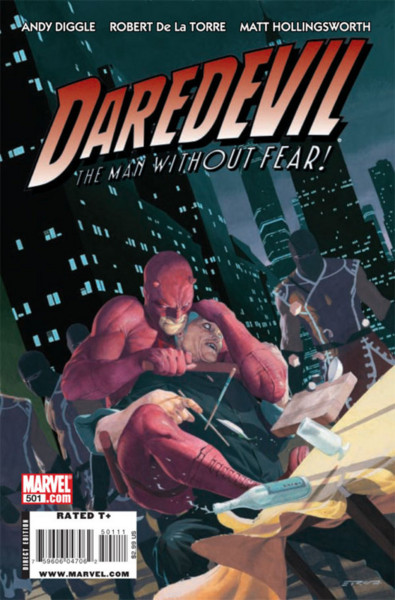
Arbona: It may have seemed like that all happened at once, but those events were in motion behind the scenes at different times, and the simultaneous change in creative and editorial teams was just coincidence; though fortuitously, it made the transition work like more of a chapter ending and a new era beginning than if it had been just a creative team change.
It all started with Ed's long-term plan to get us to that point with the anniversary issue, and Matt accepting the leadership mantle of the Hand, as his DAREDEVIL swan song -- leaving the incoming creative team with as massive a status quo change as he'd inherited from Brian Michael Bendis when that run ended with Murdock going to prison.
Warren and I began the transition process, and brought Andy Diggle and Roberto De La Torre aboard. We also had Matt Hollingsworth as our constant, and it was a great pleasure for us, and a great benefit, to count on his coloring for its invaluable contribution to the aesthetic, emotional, and narrative success of the comic. I'm pretty sure Joe Caramagna was already lettering the comic by then, too, and we got to keep his sharp work in our quiver as well. And of course, Ed worked with Andy the same as Brian had worked with Ed, to hash out what strands he'd lay down and how Andy would pick them up and make them his own, for all of us to make sure we were passing the baton smoothly.
Then Warren and I edited that first multi-colon one-shot, DARK REIGN: THE LIST: DAREDEVIL by Andy and Billy Tan. Inks on that issue were by Matt Banning and colors were by Justin Ponsor. I think Frank D'Armata also helped us out there. By then we were preparing our plans for the Andy/Roberto era of Daredevil, and it was at some point during that time that Warren made his decision to move on from Marvel.
Knowing the comic would go to Stephen Wacker and Tom Brennan to take over editing, we kept Steve in the loop on that DARK REIGN one-shot, and by the time Warren and I had started issue #501 and gotten it half in the can -- Andy and Roberto's first issue in the ongoing series -- we in turn passed our baton to Steve and Tom.
Steve is an editor who really puts his voice into his comics (Steve, I swear I don't mean that as a knock, big-mouth). And that's what truly made that editorial transition feel like a whole new beginning for the comic. Not only was it a new creative team, starting a drastically new and tumultuous chapter in Daredevil's life, but with Steve's charisma and almost Stan Lee-like editorial presence in the comic to greet readers directly, there was a clear turning of a page. And what's more, it turned out to be a challenge where only Steve would be able to top Steve, launching the new DAREDEVIL by Mark Waid, Marcos Martin, Paolo Rivera, and Javier Rodriguez, and completely refreshing the comic all over again.
Of course, that all came after a round of office changes paired me with Steve to work on DAREDEVIL: REBORN and to begin helping him develop the DAREDEVIL relaunch, until another office change not much later meant I moved directly under Tom Brevoort's oversight and didn't get to stay on DAREDEVIL #1 after all.
This insider baseball must be boring your readers to tears. If anyone's made it this far...
Hey, Michael Lark drew me and Simons into DAREDEVIL #95! Fun!!
Incidentally, I don't want to overlook some wonderful work in the larger Daredevil world that I felt privileged to be a part of as well. Remember that Warren and I collaborated with Zeb Wells on both DAREDEVIL: BATTLIN' JACK MURDOCK -- that one right at the start of my Marvel career, when I was still really green -- and on DARK REIGN: ELEKTRA. The art on BATTLIN' JACK was by Carmine Di Giandomenico, a wonderful, wonderful, wonderful artist and person who I'd get to edit over and over again for years to come -- namely on INVINCIBLE IRON MAN ANNUAL #1 and INVINCIBLE IRON MAN #500, to name a couple of favorites -- and would come to consider a friend as well. And ELEKTRA was drawn by Clay Mann, who also did DAREDEVIL #111, the Lady Bullseye issue, and whose work just knocks me right on my ass. Clay worked with Mark Pennington inking and Matt Hollingsworth coloring that Elektra mini. I really loved doing both of those comics.
Later, in Steve's office, I got to work with Zeb again on SHADOWLAND: ELEKTRA, this time with art by Emma Ríos. She's a great, great artist who I first met in Barcelona in 2008 and who I'd been dying to work with ever since. Not long after that we did OSBORN together, with the terrific Kelly Sue DeConnick writing, one of the comics I was proudest of in my whole Marvel career.
And Zeb was always one of my favorite writers to work with. He and I had an offbeat pet project in the oven that was never announced, that dated all the way back to Warren's day when the two of them started it together, and that I'm guessing might never see the light of day. Too bad; the art on that one would have blown a few doors off their hinges, and the story was exciting and hilarious. It has a spot on the short list of my favorite comics I edited and that while it was only half done, at that. I've probably said too much.

Mithra: With that contact "rolodex" you mentioned earlier, how did it lead to Andy Diggle and Roberto De La Torre?
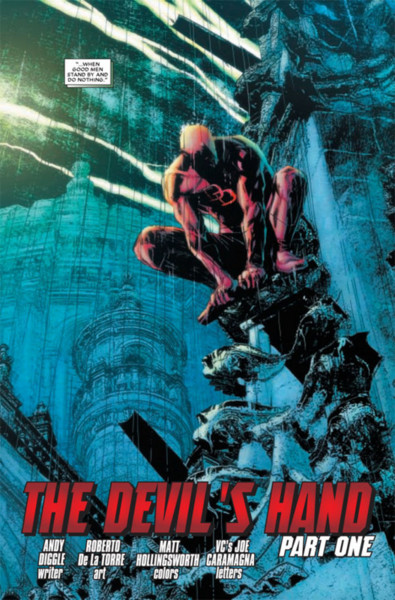
Arbona: A big part of the editor's job is making the creative hiring choices on a comic; in fact, the way Tom Brevoort always describes it, that's ninety percent of the editor's work, hiring well, and he's right. For example, Ralph Macchio was the one who hired Frank Miller on DAREDEVIL for his second run, and David Mazzucchelli that time to boot, which is probably the perfect example of an editor making their mark on a comic by picking the people to do it. Ralph also put together the Miller/John Romita Jr. MAN WITHOUT FEAR book, and hired Annie Nocenti when Frank was moving on.
That said, there are also comics where the editor is the key player in that decision but it also has to be made in consensus with the larger group -- the senior editor, the editor in chief. You don't just go and hire a creative team on a flagship comic with one of Marvel's core characters like Daredevil (or Iron Man or Thor or Spider-Man) without your superiors vetting the hire and approving it. Those discussions usually happen in small groups during a series of short meetings, followed up by a flurry of emails and so forth, before an agreement is reached, "Okay, make the phone call."
When Warren began plotting the course of what we'd do with the comic once the creative team moved on, those conversations took place and the offer was extended to Andy and Roberto. One big factor going into the decision was having some general idea what emotional beats the next run would touch on, and casting creators who'd have the right stylistic chops to handle those themes. We didn't hand Andy a story for him to paint by numbers, but we knew Murdock would be leading the Hand and it would get dark and heavy. You can see why Andy and Roberto would be natural choices for that sort of direction. After that, it was in their hands and Wacker's and Brennan's.
Mithra: You've gone over most of your Marvel work already, so I wanted to ask you about your career post-Marvel? I know you are editing CASANOVA, but haven't heard what else... are you still concentrating on "comics"?
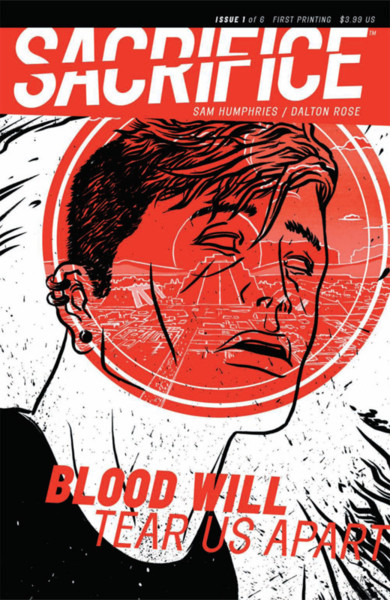
Arbona: In addition to CASANOVA, I also edit a comic called SACRIFICE by Sam Humphries and Dalton Rose, with colors by Pete Toms, lettering by Troy Peteri, and design by Dylan Todd, with a bunch of cool guest cover artists (including Emma Ríos and Cliff Chiang on the issues so far and exciting announcements to come). I recommend it highly. Sam self-publishes SACRIFICE; and that plus his previous self-published one-shot, OUR LOVE IS REAL, later picked up by Image for a new edition, have been Sam's entry into the big leagues. Look at all the great work he's doing now with Marvel and Boom! Studios. A fine example for anyone to follow.
But that's about it for me and editing comics. You may see me pick up another gig here and there, but in general I've decided to move on from editorial; a decision I made the very day Marvel laid me off, in fact that very morning as soon as it had happened.
I love editing comics -- love love LOVE IT -- and I think I'm good at it and people really seem to like me doing it. But I always, always, always wanted my career in the big-picture, life-long sense to be very diverse; I knew comics editing wouldn't be the only thing I dedicated my lifetime to, nor any other one thing just by itself. And as much as I loved my job at Marvel, I knew that sooner or later I'd leave there to do other things, different things in other industries, more hands-on creative work, et cetera. I also always wanted to be my own boss one day. So when layoffs came to Marvel last year, the choice was made for me, granted, and sooner than I probably would have made it myself, but it was a choice I was ready to make, and I saw it as an opportunity to move on and try my hand at those other things.
But let's be blunt, there's also a bit of a 99% thing going on in my thought process here.
Our parents and our grandparents could spend their entire lives working loyally for one company, and for a considerable amount of them, that would put them solidly in the middle class and afford them the ability to send their kids to college and save money to retire. That world doesn't exist anymore. Some people call this the age of the independent worker, but I think that trend has come about less by choice and more by necessity. If you're a young person entering the workforce today, or a young, middle-aged, or even older person working today, it seems like the entire employment landscape consists of smaller businesses that barely have a fighting chance to thrive without going under, or companies where human resources have become less "human" and more "resources," expendable ones at that.
By all the accounts of my superiors like Tom Brevoort and Axel Alonso and of my creative collaborators, who were so kind and generous with their compliments and goodwill when I lost my job, I excelled as an editor. If I could be laid off in spite of that -- because really in this economy it could happen to anyone, anywhere -- then I'm afraid I simply don't want to go on putting my employment prospects in the hands of others and entrusting them with the power to decide unilaterally to terminate me.
So I'm doing some freelance work in the marketing industry, interesting work that really feeds my curiosity about human nature, and I'm writing. The writing is only for myself for the time being, but I hope to start sharing some news about it soon. As much as I LOVE editing comics, and as proud as I am of the work I've done with Marvel and with my various writers and collaborators, there's still always been the nagging dissatisfaction that I was working with other people to help them tell their stories, when the one thing I've wanted for as long as I can remember was to tell stories of my own.
Mithra: Thanks very much for doing this interview. Editing comics always seems to be a mystery to most comics fans. We covered quite a bit and I hope we touched on all the projects you worked on at Marvel. I did want to mention the Fantastic Four one-shots you did with Tom Beland and Juan Doe, because I know those were very important to you. So, thanks again for your time working on it, and also thanks for always being so supportive of the site.
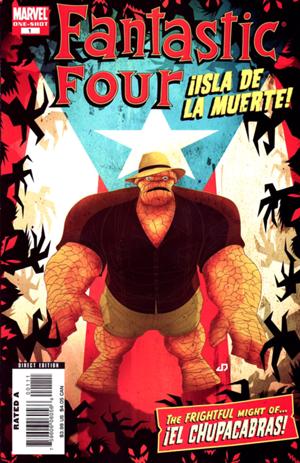
Arbona: The Fantastic Four one-shots with Tom Beland and Juan Doe were indeed very special to me, because they were a way for me to bring the comics back home, to Puerto Rico where I was born and raised, as well as a chance to spotlight the important and neglected subjects in Puerto Rico of ecology and conservation.
It all started with Steve Wacker; back when I was still an assistant editor with Warren, Steve approached Tom Beland about doing an FF one-shot that would focus on them as a family. Tom came up with this great idea about the team as tourists in Puerto Rico investigating the mystery of el chupacabra. As a kid growing up in San Juan in the '90s, the chupacabra had been a pop-cultural touchstone and a hilarious example of Puerto Rico's often surreal character.
Steve asked if I'd help him out as assistant editor on the one-shot, but once I brought aboard Juan Doe to do the full-color art, and started working intimately with Tom to develop and polish the story and its wealth of local details, I started taking editorial ownership of the project and Steve generously gave it to me to edit myself. I came up with our goofy title -- FANTASTIC FOUR IN... '¡ISLA DE LA MUERTE!' -- and we were met with a very nice and overwhelmingly positive reception. Incidentally, while researching the material, I discovered a random fact that I had lost sight of or maybe never even quite knew to begin with: I've always fought the good fight to remind people that el chupacabra came from Puerto Rico, not Mexico as many people seem to think; but while looking into it, I discovered that it was my own uncle, Silverio Pérez, an entertainer and satirist, who coined the term "chupacabra." And there I was, keeping it in the family. In the story we turned the attacks of the chupacabras into the desperate plight of an animal losing its habitat to overdevelopment, helped along by the super-villainous manipulations of the Mole Man, and tried to underscore a point for conservation and animal rights -- even make-believe cryptozoological animal rights.
The comic came out over Christmas, when I was visiting Puerto Rico anyway, so a great comic shop in San Juan, Metro Comics, hosted a signing and launch party with Tom and myself and flew in Juan Doe to attend. It was one of the most fun side experiences to being an editor I ever had. That weekend, Tom and I floated the possibility of a sequel, and Tom already had just the idea for it.
Vieques is a small island off Puerto Rico's northeast shore, where the US Navy conducted sea, land, and air training exercises. One day a stray bomb struck a guard tower and killed a Puerto Rican civilian security guard, leading to mass protests and the Navy's eventual ouster from the island. But lots of unexploded shells were still lying around, as well as a landscape pockmarked by craters from explosions and bullet-scarred trees and rocks. Most discomforting of all, in their exercises the Navy used depleted uranium rounds for live fire practice, leaving the groundwater contaminated with uranium and contributing to much higher rates of cancer in Vieques than in the rest of mainland Puerto Rico. Ironically, because the Navy's use of Vieques precluded other development, the little island also remained relatively unspoiled in its natural resources. Among its vast beauty and gorgeous beaches, Vieques is home to the world's brightest bioluminescent bay -- a body of water full of microscopic life forms, dinoflagellates, that use the same biological chemicals as fireflies to light themselves up. They're too small to see with the naked eye, but when you roil the waters of the bay at night, they glow like magic. Absolutely one of the most remarkable natural wonders I've ever seen, and what's more, swum in. But alas, the glow of the bay and the survival of the dinoflagellates depend on protecting them from unnatural light pollution, a tricky balance that was helped along by the pitch-black nights that Vieques's unspoiled nature provided. Now that the Navy has vacated the island, and the local town has had room to grow, and fancy hotel and resort developments have begun to spring up, artificial light is starting to creep over the horizons surrounding the bay.
So Tom's idea for the sequel was remarkably simple in its brilliance: in true 1960s Marvel fashion, the uranium from the Navy's waste had seeped into the bioluminescent bay and brought it to life as a giant, glowing water monster. I responded with the idea that bright light would hurt it, and so it would chase and smash any artificial light sources, like the nearby town and the bright lights of the mainland. Tom wanted to use Diablo as a villain, a Spaniard, and with Puerto Rico's Spanish colonial history and the history of the Puerto Rican "taíno" natives who first encountered Spanish colonialists and who first lived on the small island and marveled at the mystery of its glowing bay, our story started to come together.
When we worked on that one, which I ended up calling SPIDER-MAN AND THE HUMAN TORCH IN... 'BAHÍA DE LOS MUERTOS!', I started an email conversation with Mark Martin, a marine biologist and a dedicated champion of the Vieques Conservation and Historical Trust. He read the script and helped us out immensely with consultation, fact-checking, and a wealth of background information that would never even make it into the comic but that we were glad to have in the backs of our minds for reference and future wisdom. It's thanks to Mark that I have a working knowledge now of exactly how these microorganisms create their glow and the theories as to why. And when the comic came out in shops -- again celebrated with a party and signing at Metro Comics in San Juan -- Mark Martin came out to visit us and took home stacks and stacks of the comic to use in his education efforts when giving tours of the bay and teaching his guests about light pollution and conservation.
We went all-out for our third and final issue, FANTASTIC FOUR IN... '¡EL ATAQUE DEL M.O.D.O.K.!', bringing in the entire team right from go this time around, and telling a bigger, more ripping adventure yarn built around a Reed Richards/Sue Storm love story. The initial idea for this last one came from the real-life rhesus macaque population of Cayo Santiago, Puerto Rico's "Monkey Island." A simian research institute stocked that small offshore island with an imported population of rhesus macaque monkeys, to roam free and live wild, but ever there for biologists to visit, set up shop, and observe them. With M.O.D.O.K.'s exploitation of the macaques for the sinister ends of Advanced Idea Mechanics, we took what appeared to be another conservation and animal rights story and surreptitiously turned it also into a story about the ailing economy. M.O.D.O.K. hoped to use the monkeys as cheaper, more expendable, and more easily replaceable foot soldiers for A.I.M., cutting down on human resources, training, health insurance, etc.
We also took advantage of this one-shot to introduce a character Tom Beland had been dreaming up for a while, our very own island-born-and-bred Puerto Rican super hero, El Vejigante. Vejigantes are a folklore tradition in Puerto Rico of elaborate spangled costumes and intricately handmade horned masks, usually made out of coconuts and papier mâché, worn to celebrate festivals like the days of patron saints such as Saint Sebastian. Vejigantes are tricksters, partiers, and bon vivants, exactly what we tried to make our new guy. I doubt we'll ever see El Vejigante grace the pages of another Marvel comic, but for our one time out with him, it was a thrill.
But I feel like there were so many comics that were very important to me: MAGNETO: TESTAMENT and RED SKULL: INCARNATE with Greg Pak; INVINCIBLE IRON MAN; THOR with Kieron Gillen and developing a new run with Fraction, plus a great Loki one-shot I did with Kieron and Jamie McKelvie; anything I ever did with Kelly Sue DeConnick like OSBORN, SIF, and RESCUE; discovering Dennis Hopeless and doing X-MEN: SEASON ONE and LEGION OF MONSTERS with him; IMMORTAL IRON FIST and IMMORTAL WEAPONS; developing DEFENDERS; etc. etc. etc. Yeah... I guess I had a pretty good run.
Kuljit, thanks so much for having me!
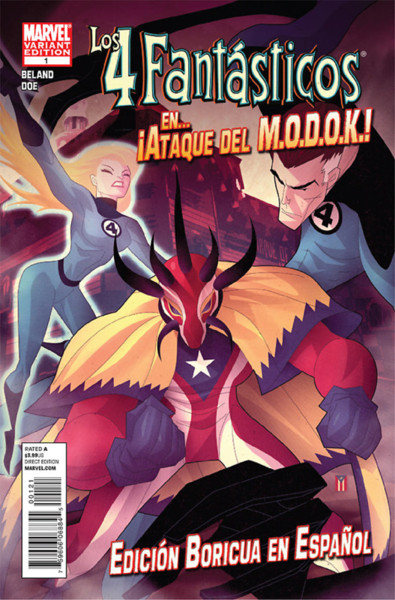
----------------------------------------------
(c) 2012 Kuljit Mithra & Alejandro Arbona
Daredevil:The Man Without Fear
http://www.manwithoutfear.com
----------------------------------------------














Daredevil (and other related characters appearing) and the
distinctive likenesses are Trademarks of Marvel Characters, Inc. and are
used WITHOUT permission.
Copyright © 2024 Marvel Characters, Inc.
All
Rights Reserved. Visit Marvel.com.
www.manwithoutfear.com is owned and operated by Kuljit Mithra.
Web site is © Kuljit Mithra 1996-2025.
Keep up to the date with your trusted Daredevil source ManWithoutFear.com on  and
and 